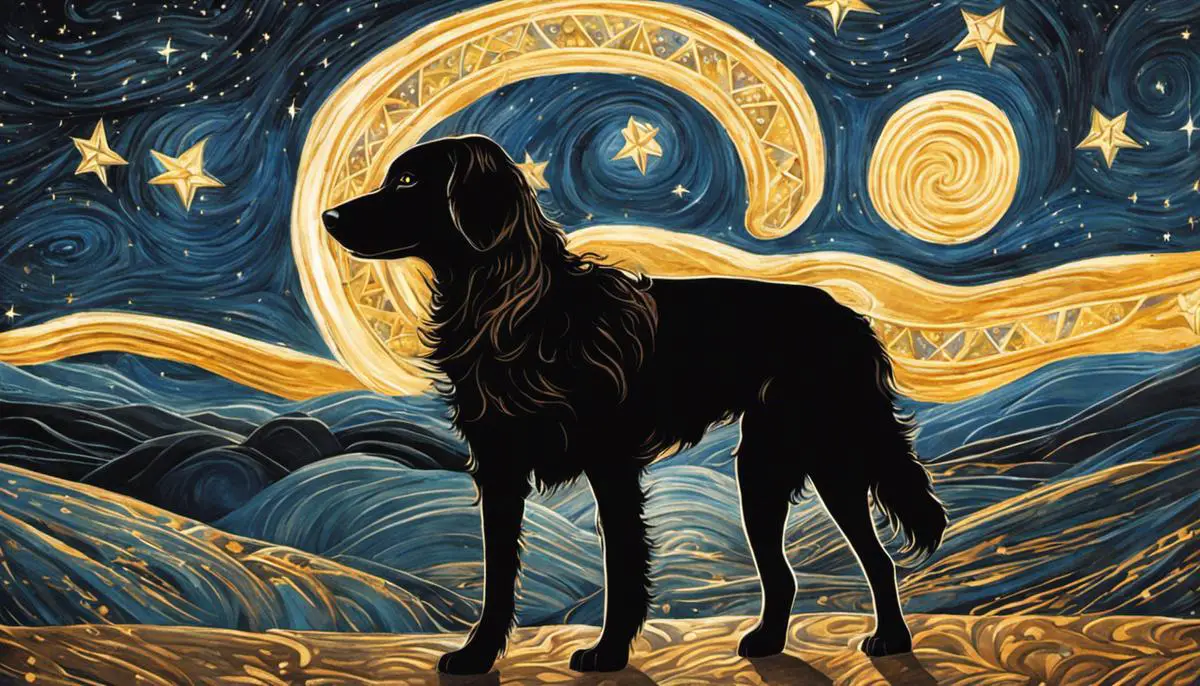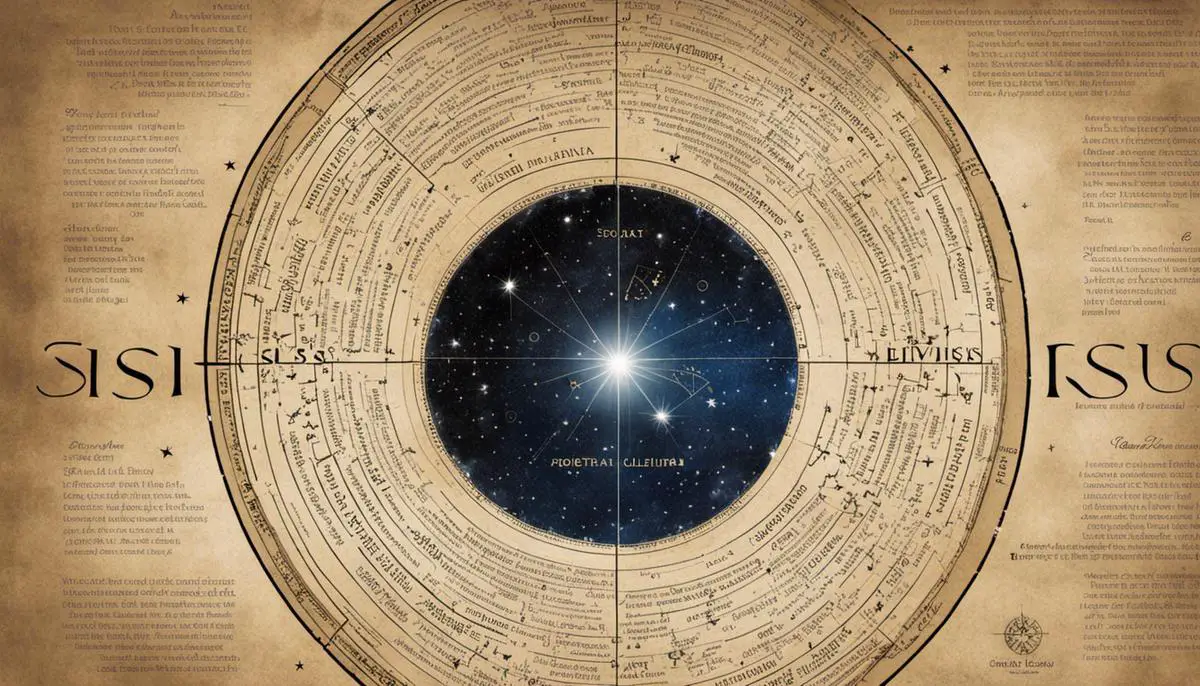Sirius, a bright star famously known as the ‘Dog Star’, holds a fascinating blend of cultural, astronomical, and historical significance. The origins of its intriguing nickname draw from varied linguistic roots, ancient mythologies, and its unique observable features. A journey through time reveals how Sirius, not only being unique in its astronomical characteristics but also being constantly present in human history, has both influenced and been influenced by the civilizations that revered its unmissable glow in the night sky. This exploration will crisscross from dissecting the linguistic roots of ‘Sirius’ to discussing its inherent astronomical features, following it all the way to its prominence in ancient cultures, and culminating to its significance in the modern-day interpretation of the cosmos.
The Origin and Meaning of ‘Sirius’
The Linguistic Roots of ‘Sirius’
The term ‘Sirius’ comes from the Ancient Greek word ‘Seirios’ which means ‘glowing’ or ‘scorcher’. This is a fitting description, as Sirius is the brightest star in the Earth’s night sky. Due to its high visibility, Sirius was of significant astronomical and symbolic importance to many ancient civilizations.
Greek Mythology and Sirius: The Dog Star
In Greek mythology, Sirius is associated with the dog Sirius, the faithful canine companion of the mighty hunter Orion. After Orion’s death, his loyal dog was said to be placed in the sky near his constellation. The star played a notable part in the Greeks’ seasons. Its rising alongside the sun in summer is thought to have brought the heat, giving rise to its nickname, the ‘Dog Days of Summer’.
Egyptian Beliefs and Sirius
In Ancient Egypt, Sirius was associated with the goddess Isis and was symbolic of renewal and fertility. Its annual appearance just before dawn at the summer solstice, known as heliacal rising, was regarded as the herald of the flooding of the Nile which was crucial for agriculture. They called Sirius ‘Sothis’, but its heralding of the inundation led to the association with dogs, which typically howl before major events.
Other Cultures and Sirius
The star also held significance for other cultures. In Australian Aboriginal astronomy, Sirius is a part of the constellation of Canopus, the ‘South Star’. The Boorong people in Victoria knew it as ‘Warepil’. The Maori people of New Zealand called it ‘Takurua’. Regardless of the cultural context, Sirius is a symbol of guidance and harbinger of significant events, often linked with dogs for their loyalty and intuition.
Sirius in Contemporary Astronomy
Known as Sirius A in the scientific world, Sirius dominates the night sky with its unparalleled brightness. Nested within the constellation of Canis Major, also known as the ‘Great Dog’, this star’s radiant light is commonly the first to be noticed, regardless of one’s location on Earth. Its enduring epithet, the ‘Dog Star’, reflects a tradition of associating celestial bodies with terrestrial elements.

Astronomical Characteristics of Sirius
Sirius: A Closer Look at the Dog Star
The Dog Star, known widely as Sirius, is the brightest star that bedazzles our night sky. Occupying a place in the constellation known as Canis Major, which translates to “Great Dog,” its magnitude of -1.46 outshines even Canopus, the second brightest star observable from Earth. It’s specifically situated in the constellation Canis Major that Sirius has been bestowed with its famous sobriquet, the Dog Star.
In terms of its celestial properties, Sirius is a binary star system. This system encompasses two stars: Sirius A, which is brighter and classed as a white main sequence star, the same category as our sun, alongside Sirius B, categorized as a faint white dwarf. From an Earthly perspective, the pair appear as a single radiating point due to their proximity.
The physical attributes of Sirius contribute significantly to its dog-related analogue. Its striking luminosity could potentially reflect a dog’s sharp vision, capable of piercing the veil of the darkest nights. Additionally, its place in the Canis Major constellation, traditionally represented as a massive dog trailing the hunter Orion, strengthens this relation. Ancient cultures recognized these qualities. For instance, the name Sirius itself originates from the Ancient Greek word “Seirios,” meaning “glowing” or “scorching.”
A particularly captivating characteristic is the frequent misinterpretations owing to the dazzling brilliance of Sirius. The intense celestial body, interacting with our atmosphere, often seems to sparkle in diverse colors, leading to misidentifications as an airplane or even a UFO. This is usually referred to as ‘the Sirius Effect’, a phenomenon where bright sources of light near the horizon, such as Sirius or Venus, are perceived as objects in the sky exhibiting irregular movement.
Additionally, due to Earth’s axial precession, Sirius’s status as the Dog Star isn’t permanent. In roughly 210,000 years, the fifth brightest star in the night sky, Vega, will surpass Sirius in brilliance as Earth’s axis gradually wobbles, showing the ever-changing dynamics of our universe.
Regardless of its celestial and physical parameters, the cultural significance of Sirius has remained persistent through the ages. With roles in ancient Egyptian rituals, where it was believed the heliacal rising of Sirius foretold the Nile’s annual floods, in Greek mythology, where its rising marked the sweltering “dog days” of summer, to modern western astrology, where it’s associated with fame, affluence, and passion, Sirius, the Dog Star, continues to enrapture and mystify.

Sirius in Ancient Mythologies and Cultures
The Dog Star, Sirius, Through the Prism of Ancient Mythologies and Cultures
The Dog Star, Sirius, not only holds a prominent celestial position but also has a significant cultural footprint. This star, with its distinct bluish-white shimmer, has been an object of fascination passed down through ages and amongst various civilizations. From the ancient realms of Egypt to the classical eras of Greece, its presence in the sky has been memorialized, making it one of the most remarkable celestial entities recognized by diverse cultures.
Sirius in Ancient Egypt
In ancient Egypt, Sirius was perceived with great significance due to its heliacal rising, which corresponds with the annual flooding of the Nile River. This star was associated with the goddess Isis and was called Sopdet which translates into ‘sharp star’. Even though there is no direct connection with dogs or canine figures in ancient Egypt, the star marked important yearly events which led to its significance in the culture.
Sirius in Ancient Greece
Ancient Greece had a more pronounced association of Sirius with dogs. In Greek mythology, Sirius was the dog of the hunter Orion and was portrayed following his master as he traversed the night sky. In Homer’s “Iliad,” it is described as Orion’s dog star that radiates disaster. Meanwhile, the summer heat in Greece was attributed to Sirius, which rose and set with the sun during that season. Hence, the term ‘Dog Days of Summer’ was derived, connecting the star with the searing heat and drought.
Significance of Dogs in Ancient Cultures
Dogs and canine figures were prevalent in numerous ancient societies. They often represented loyalty, guardianship, and protection. Moreover, Dogs were seen as divine or sacred creatures in several cultures. The association of Sirius with dogs in different mythologies may well be linked to these connotations, pointing to the star’s role as a spiritual guide and protector.
Origins of Sirius, the Dog Star
Sirius, often referred to as the ‘Dog Star,’ gets its name from ancient Greek culture where it was associated with dogs. This canine representation symbolized guidance through darkness, an apt image for the most luminous star visible from Earth. The moniker ‘Dog Star’ for Sirius has survived over the centuries, underscoring the lasting impact of this star on our cultural history and overall perception of the night sky.

The Significance of Sirius in Modern Astronomy
Sirius’ Role in Contemporary Astronomy
Sirius, or the Dog Star, is particularly important in today’s astronomy due to its exceptional brightness and proximity to Earth. Being the brightest star in our night sky, it outshines even planets such as Mars and Jupiter. At just over 8.6 light years away from us, Sirius is one of our closest celestial neighbors. Its radiant luminosity and nearness designate it a prime reference point in astronomy.
Astronomers frequently use Sirius as a benchmark to comprehend the magnitude and distances of other celestial bodies. It further serves a crucial function in adjusting telescopes and other astronomical instruments. The star’s striking white-blue glow makes Sirius a favorite object of observation for both seasoned astronomers and hobbyist stargazers alike.
The Association of Sirius as ‘Dog Star’
The term “Dog Star” comes from its prominence in the constellation Canis Major, i.e., the “Greater Dog”. In ancient Greek and Roman cultures, the rising of Sirius heralded the “dog days” of summer, as it rose and set with the Sun during the hottest days of July and August. This was believed to contribute to the sweltering summer heat, thus earning the nickname of the Dog Star.
In mythology, Sirius was represented as the dog of Orion, a great hunter. In some cultures, it was thought to be the rainbow bridge connecting the realms of the Gods and humanity. However, its common theme across many cultures is its association with dogs or wolves, which has led to its modern term “Dog Star”.
Modern Interpretations and Associations of Sirius
Today the label “Dog Star” serves as a catchy informal term known to amateur stargazers and people interested in astronomy. Even in popular culture, Sirius retains its association with dogs, such as in the Harry Potter series, where a character named after the star, Sirius Black, can transform into a dog. Meanwhile, in science fiction, the star often features due to its absolute brightness and close proximity to our solar system.
Besides its cultural implications, Sirius continues to spark scientific curiosity. Its system comprises two stars: Sirius A, which we see from Earth, and Sirius B, a faint white dwarf. The study of Sirius B has greatly contributed to our understanding of white dwarfs, as well aiding in confirming aspects of Einstein’s general theory of relativity.
An Image of Sirius

As Sirius continues to twinkle down at us diurnally, it serves as a constant reminder not only of our exponential progress in the field of astronomy, but also of the timeless narratives human beings have spun out of a need to make sense of the universe. The ‘Dog Star’, straddling both science and lore, stands embounded in the tapestry of human existence, providing an undying link between our past, present, and future. Through contemplating Sirius, we engage in an age-old human tradition of linking our terrestrial experiences with celestial phenomena, creating a sense of continuity, community, and connection to the wider universe.
![]()
